I have a PCB with 60 or so traces in a parallel geometry such that the traces are connected in an alternating pattern as in the picture. My question is, what is the correct way to calculate the total capacitance of this board? My first thought is to treat each pair of traces as a capacitor in parallel with the next pair.The PCB is FR4 if I should consider the dielectric constant. 
Asked
Active
Viewed 41 times
1
Marcus Müller
- 88,280
- 5
- 131
- 237
Michael
- 11
- 1
-
3On one hand, I liked "dialectic constant" very much, and want to discuss it. On the other, I fixed a typo in "dielectric constant" :) – Marcus Müller Nov 03 '21 at 00:25
-
2@MarcusMüller Okay. Let's discuss... The Hegelian **dialectic [of] constant** conflict is ridiculous as it proposes that the continual conflict between extreme belief systems will eventually lead mankind towards a final perfection. ;) – jonk Nov 03 '21 at 00:48
-
2What Hegel could not see, of course, was the later **constant dialectic** of simulation versus rule of thumb; two concepts competing for highest utility for the engineer. – Marcus Müller Nov 03 '21 at 00:50
-
1@MarcusMüller :):)!! – jonk Nov 03 '21 at 00:51
-
1(Michael, seriously, if I wanted to produce a 2D structure where I'd guess all the boundary effects add up so significantly that you can't treat this just as a bunch of parallel conductors in average-\$\varepsilon\$ environment, it might very well look like this. Either someone did *a lot* of math or simulation to come up with a formula for these interdigital traces structure, or this will need to be FEM-simulated) – Marcus Müller Nov 03 '21 at 00:52
-
At which frequency is this going to be operated? Just asking for a friend with EMI-sensitive electronics! – Marcus Müller Nov 03 '21 at 00:53
-
Michael, just use a very simple PDE and a checkerboard process. Something like described [here](https://electronics.stackexchange.com/a/397805/38098), [here](https://electronics.stackexchange.com/a/342358/38098), and [here](https://electronics.stackexchange.com/questions/436945/how-to-solve-infinite-grid-with-the-observing-terminals-at-diagonal-of-infinite/437001#437001). There will be two ends of a frequency spectrum to consider and then a middle-area where "things get complicated" for about an order of magnitude frequency change. Adjust PDEs and re-run for areas of interest. – jonk Nov 03 '21 at 00:56
-
Michael, that's more a numerical FEA method. You can also just notice the repetition pattern and use calculus for the initial part at one end, for a repeating pattern you determine then multiplied by the number of such patterns, followed by the final part at the other end. I think that would be pretty easy, too. And the two approaches, theoretical and numerical, should find similar values. If they don't, rinse and repeat until you have theory and numerical analysis matching up. Or if you know someone in the business of making FR4 like this, just cheat and ask them how they do it. – jonk Nov 03 '21 at 01:02
-
This is called an *interdigital* capacitor. Unfortunately even knowing what to google I didn't find much help for your problem. There is one [calculator](https://www.rfwireless-world.com/calculators/interdigital-capacitor-calculator.html) I found, but I can't vouch for its accuracy. – The Photon Nov 03 '21 at 03:03
-
Michael, also look at Chapter 2 of **"Novel Sensors for Food Inspection: Modelling, Fabrication and Experimentation"** which is titled *"Novel Planar Interdigital Sensors"*. It discusses a number of approaches, including FEA that I mentioned earlier. Worth a look. [Here is a picture from page 12 of the book](https://i.stack.imgur.com/SjmNF.png). – jonk Nov 03 '21 at 03:58
-
These are great suggestions, many thanks! – Michael Nov 03 '21 at 09:33